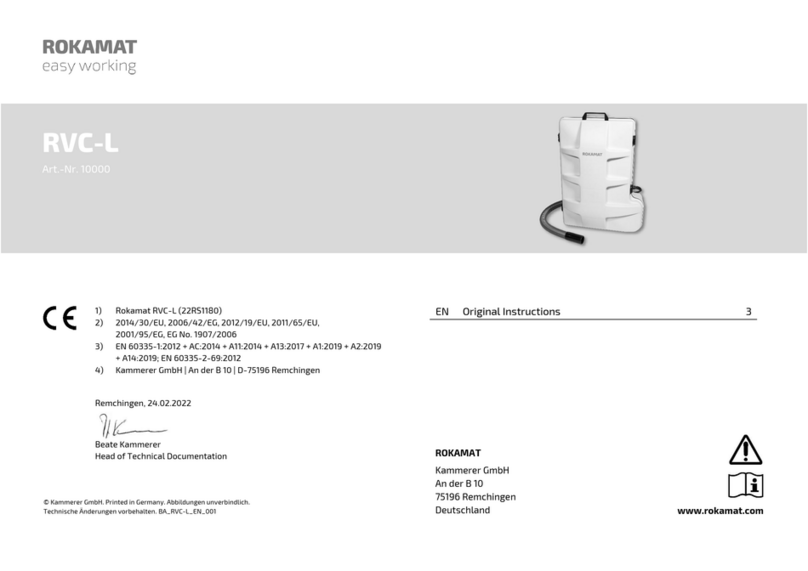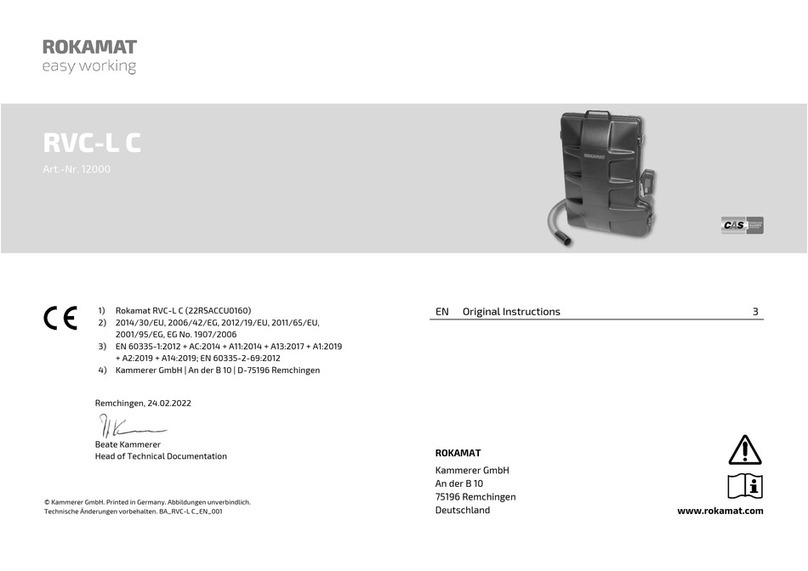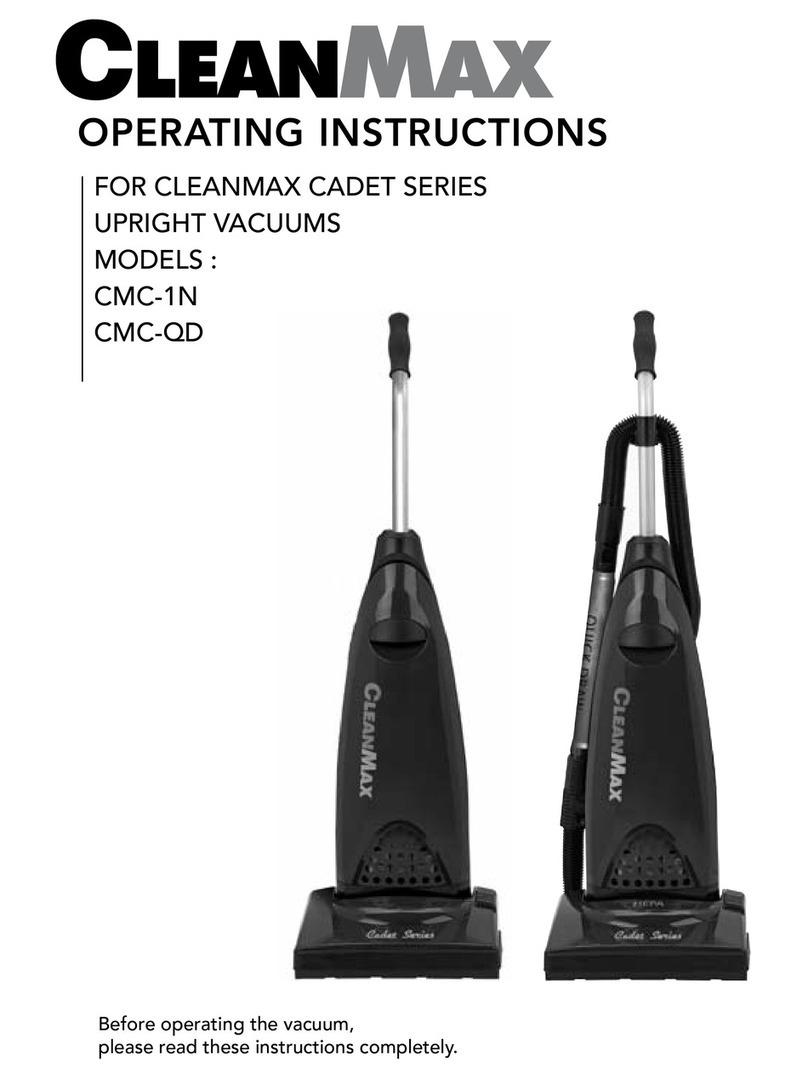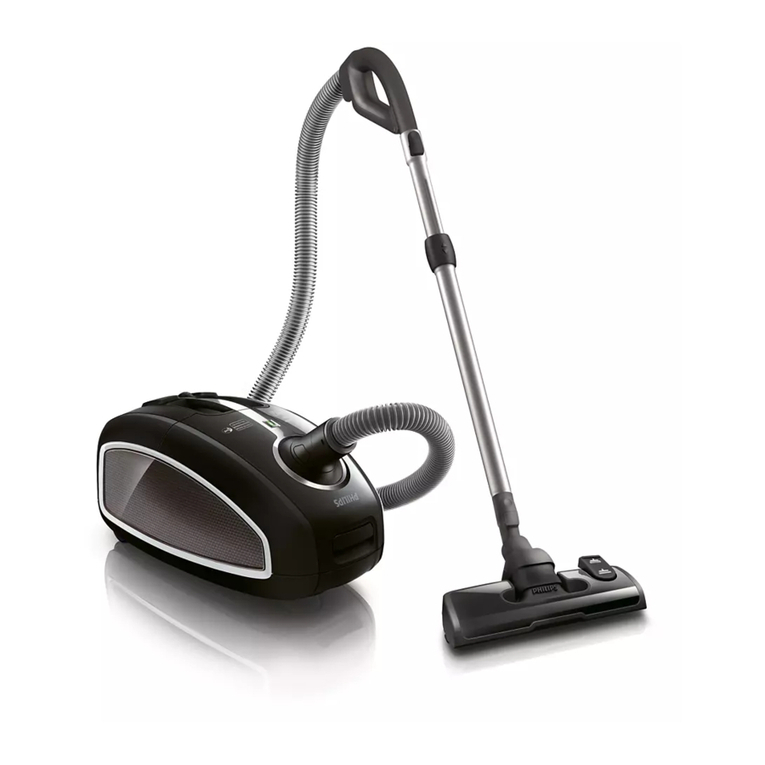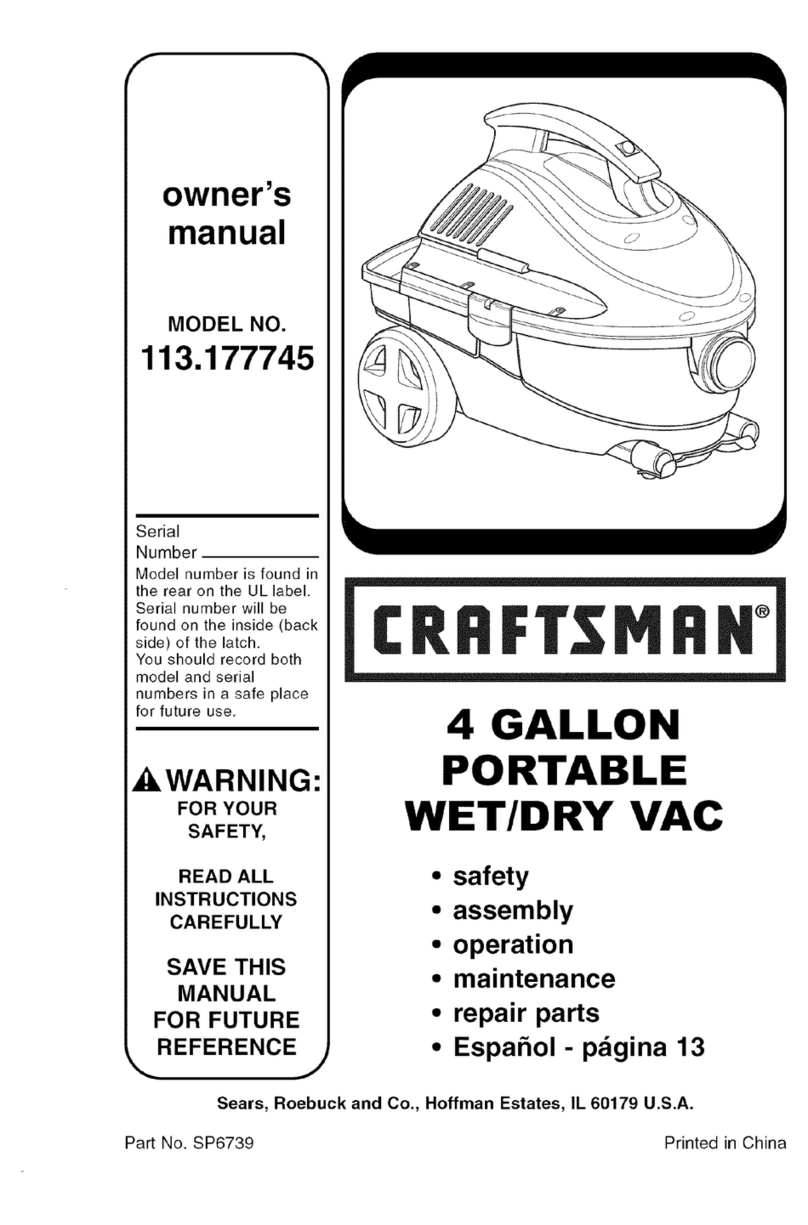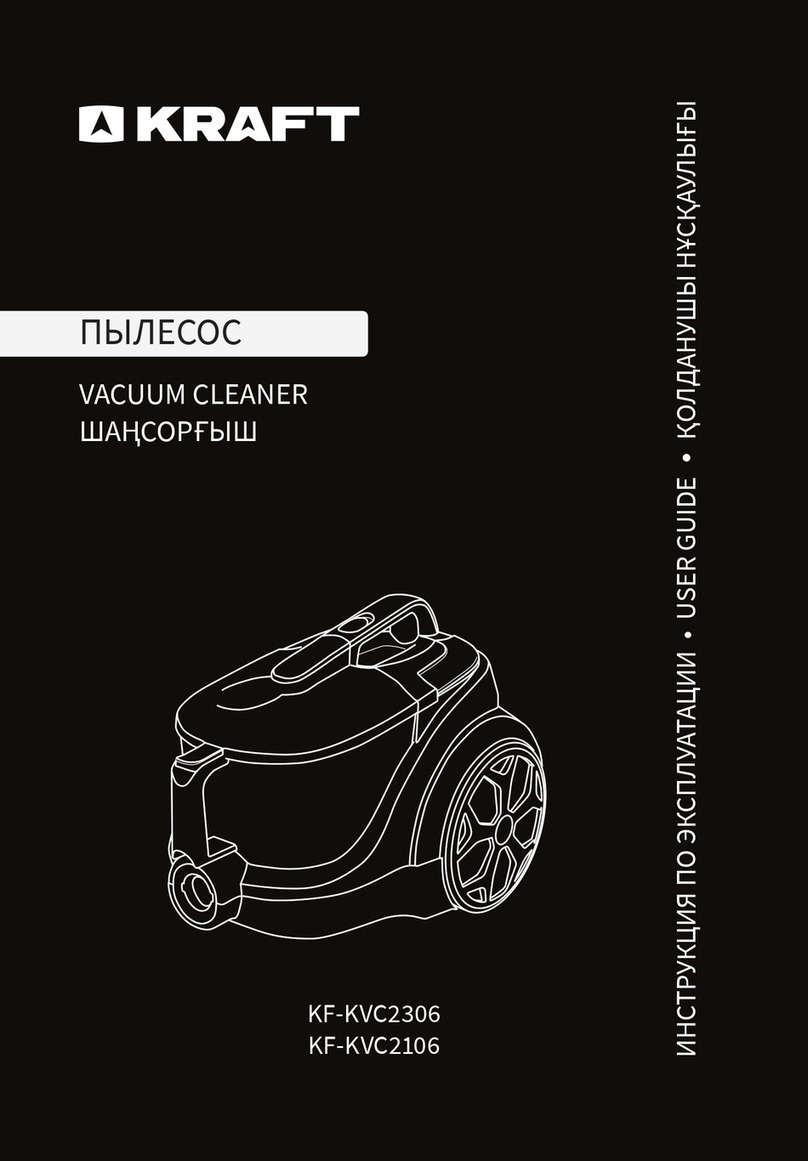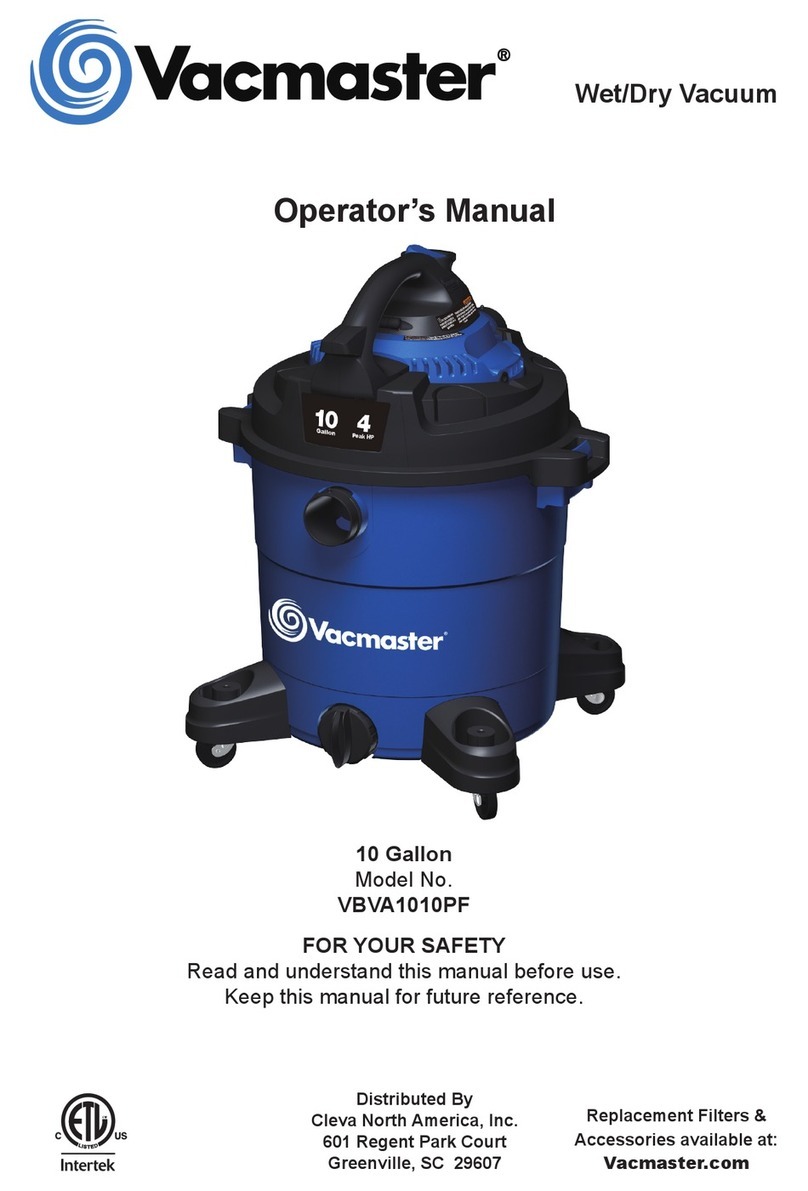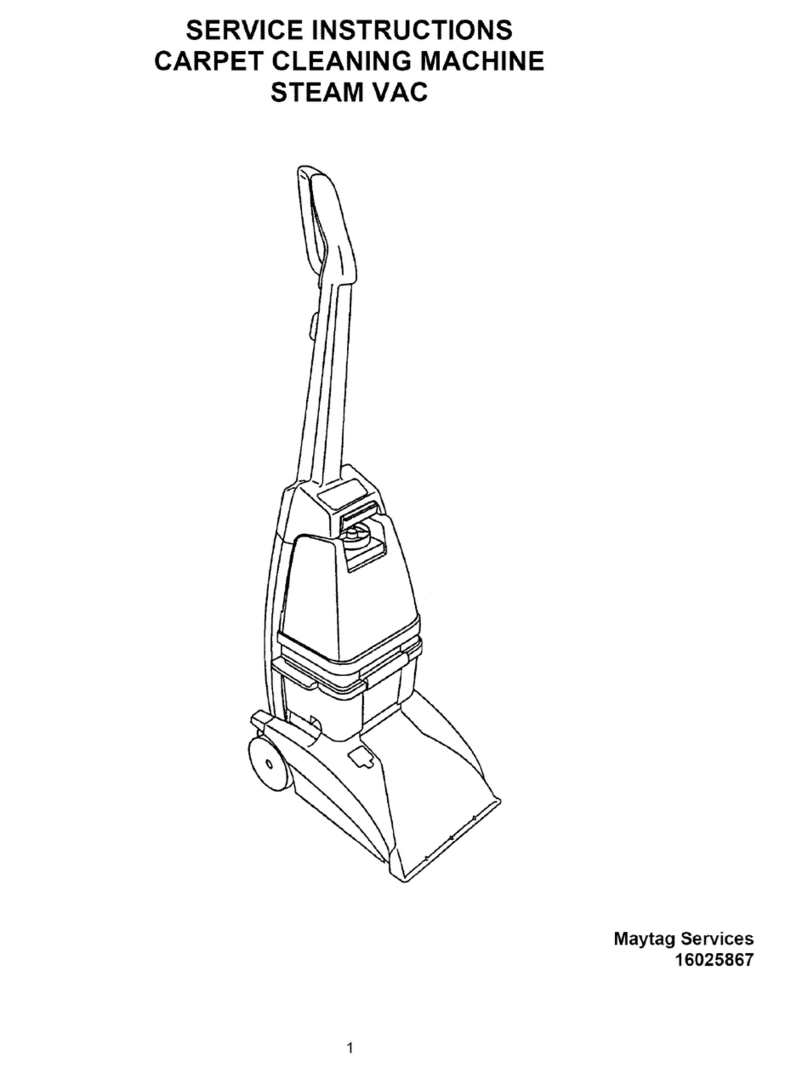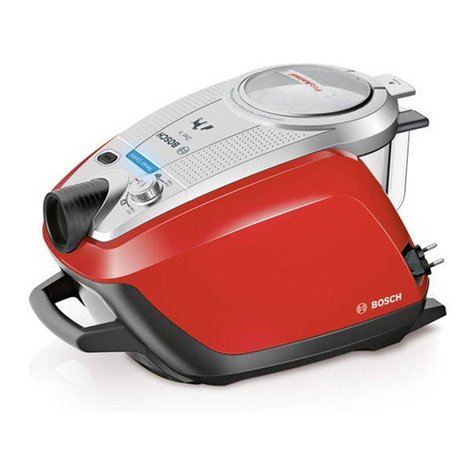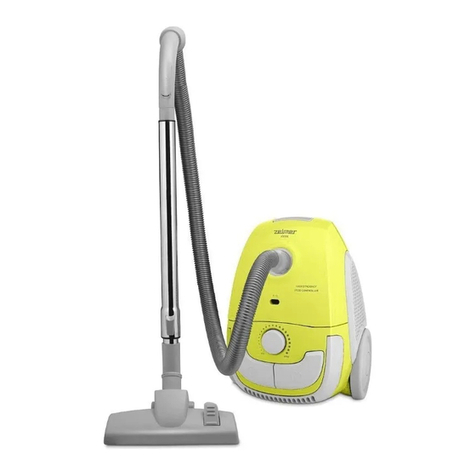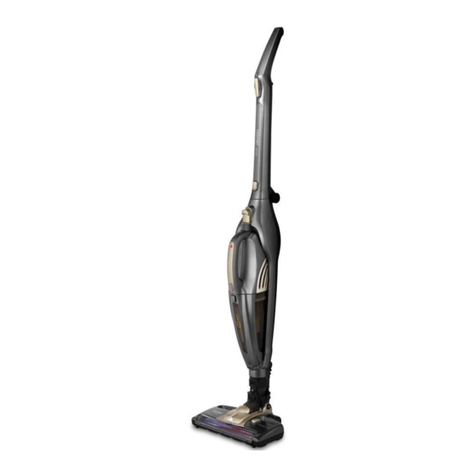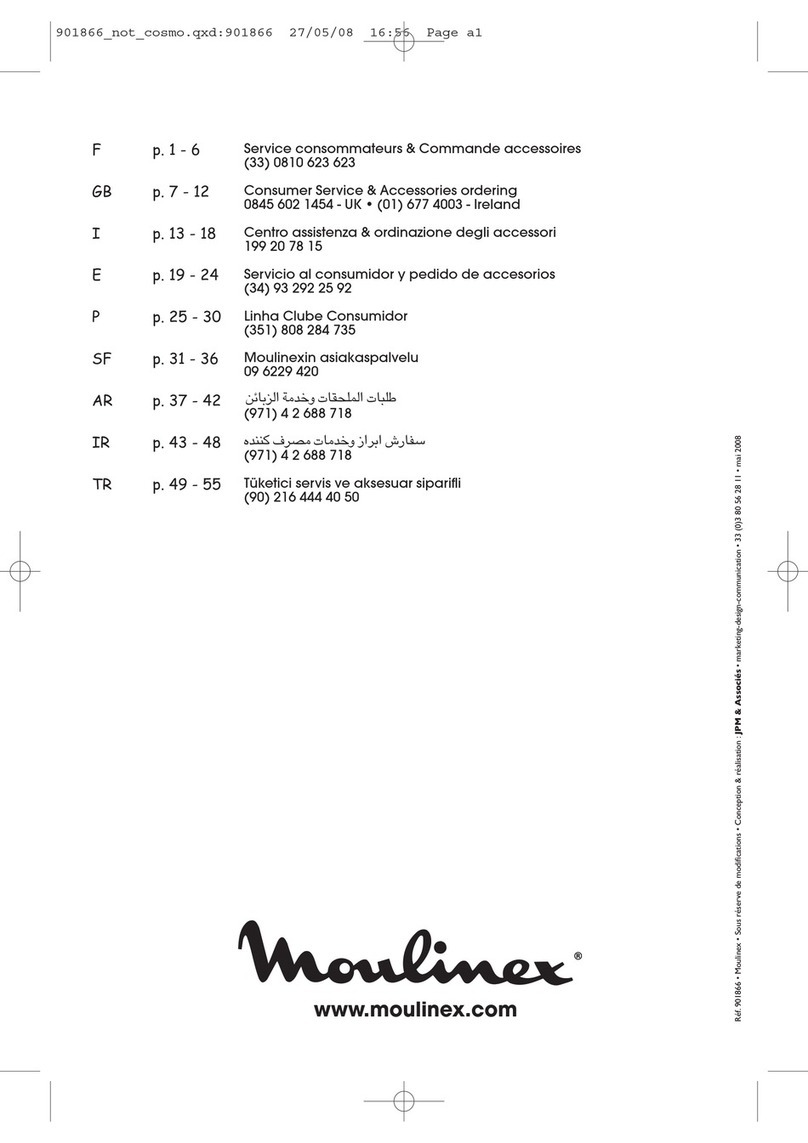ROKAMAT Rucksack User manual

ROKAMAT WIRELESS Rucksack Vacuum Cleaner
TRANSLATION OF THE
ORIGINAL INSTRUCTIONS
WARNING Read and follow all safety warnings and instructions to
prevent operating errors and to reduce the risk of injury.
Failure to follow all safety warnings and instructions may result in
electric shock, fire and/or serious injury.
Keep all safety instructions and information for future reference.
Pass on your power tool only together with these documents.
ROKAMAT WIRELESS Rucksack Vacuum Cleaner is state of the art and
has been constructed in accordance with the acknowledged safety
regulations.
ROKAMAT Rucksack Vacuum Cleaner is suitable for suctioning up/off dry non-flammable dust. It is ideally suited in
combination with an electrical tool e.g. on building sites, in workshops etc.
The user bears sole responsibility for any damage caused by inappropriate use.
Generally accepted accident prevention regulations and the enclosed safety information must be observed.
CAUTION Battery has to be disconnected from motor before each machine transport
No inflammable or explosive dusts may be suctioned off.
The vacuum cleaner may not be operated in rooms susceptible to explosions.
The vacuum cleaner may not be used near inflammable gases or substances.
Do not vacuum hot or glowing materials or those with sharp edges; otherwise there is danger of explosion or fire.
Suction hose must not be pulled over sharp edges, be bent or pinched.
Battery pack:
Remove the battery pack from the machine before any adjustments, conversions or servicing is performed.
Protect battery packs from water and moisture.
Do not recharge a fully charged battery pack.
Do not expose battery packs to naked flame.
Do not use faulty or deformed battery packs.
Do not open battery packs.
Do not touch or short-circuit battery packs.
Slightly acidic, flammable fluid may leak from defective li-ion battery packs! If battery fluid leaks out and comes into contact
with your skin, rinse immediately with plenty of water. If battery fluid leaks out and comes into contact with your eyes, wash
them with clean water and seek medical attention immediately.
Charger:
Only use the charger indoors. Protect the charger from moisture.
Children should be supervised to ensure that they do not play with the tool. Keep children away from the battery charger
and the working area! Keep your battery charger out of reach of children!
Pull out the main plug immediately if the battery charger starts to smoke or flames emerge!
Do not insert objects into the ventilation slots on the battery charger –there is a danger of electric shocks and short circuits!
WARNING Do not use faulty battery packs.
Technical Data:
Motor: 24 V
Li-Ion Akku: 18 V / 5,2 Ah
Dimensions: 63 x 43 x 20 cm
Weight: 7,6 kg
Bag contents: 15 l
Vacuum: ca. 138 mbar
Airflow: ca. 30 l/s
Noise level: 70 dB (A)
Safety class II
Reference-No. 12000
Specified Use
Special Safety Instructions

Unpack machine and accessories and check the delivery for completeness and transport damage.
CAUTION Charge the battery fully before use
Use only original ROKAMAT filter bags
Do not reuse damaged material filter bags; otherwise the motor may get damaged.
Emptying/exchanging filter bag:
1. Open cover of the vaccum cleaner.
2. Remove filter bag carefully from aspiration port.
3. For fabric filter bag: open zipper at the bottom of the bag. Dispose of dust in accordance with the legal regulations.
4. Put new paper filter bag / emtied fabric filter bag on the aspiration port.
5. Close the cover again.
The Fabric filter bag can be washed at temperatures until 40° C (104° F).
After emptying the fabric filter bag, ensure that the zipper is closed again otherwise the motor may be
damaged.
Use only original ROKAMAT battery packs
Removing battery pack:
1. Press the metal lever towards the casing and keep it depressed.
2. Push the battery pack upwards and remove it.
Fitting battery pack:
1. Put new battery pack on the bracket.
2. Push the battery pack downwards, it will engage automatically.
I Switching on: Engage the tappet switch to I
0 Switching off: Engage the tappet switch to 0
CAUTION Never vacuum without a filter bag, otherwise the motor may be damaged.
Please insert the filter bag suited to the application:
Paper filter bag (installed in delivery): Vacuuming fine dust (CAUTION: plaster dust clogs the filter bags faster
than other material does, therefore fill them only until 1/3,
otherwise: danger of bursting)
Fabric filter bag: Vacuuming Polystyrene (CAUTION: do not vacuum fine dust, otherwise the motor may be damaged)
Commissioning
Emptying/exchanging filter bags
Switching On and Off
Working Directions
Removing and inserting the battery pack

Charge the battery fully before use.
If performance diminishes, recharge the battery pack.
The ideal storage temperature is between 10°C and 30°C.
Li-ion battery packs have a capacity and signal indicator:
Press the button (2), the LEDs (1) indicates the charge level.
If one LED (1) is flashing, the battery pack is almost flat and must be recharged.
Charging battery pack:
Push the battery pack completely to the stop on sliding seat.
The operating indicator (3) flashes.
Note: To have the charger level displayed on Li-Ion battery packs, first take the battery pack out of the charger and then press
the button (2) on the battery pack.
Conservation charge:
Once the charging process has finished, the battery charger automatically switches to conversation mode.
The battery pack can remain in the battery charger and is therefore always ready for use.
The operating display (3) lights up continuously.
Battery charger:
The charger is exclusively designed for charging ROKAMAT battery packs.
Before plugging in the device, check to see that the rated mains voltage and mains frequency, as specified on the rating label,
match your power supply.
Before commissioning the charger, ensure that the air slots are free. Minimum distance to other objects is 5 cm
Self-test: Insert mains supply plug. The warning display (4) and the operating indicator (3) light up one after the other for
approx. 1 second and the installed fan runs for approx. 5 seconds.
Vacuuming capacity declines:
Replace the paper filter or empty the fabric filter bag
Check the suction hose and nozzle are not clogged
Check the lamellar filter. If dust accumulated: blow out with air or exchange the filter (following the instruction in paragraph
Repair). The lamellar filter must be renewed regularly.
Vacuum Cleaner:
The electronic signal display lights up. Charge the battery.
The electronic signal display flashes. The restart protection is active. The machine will not start if the battery pack is
inserted while the machine is on. Switch the Vacuum Cleaner off and on again.
Charger:
Warning display (4) lights up continuously. Battery pack is not charged. Temperature too high/too low. When the
temperature of the battery pack is between 0°C and 50°C, the changing process begins automatically.
Warning display (4) flashes. Battery pack is defective. Remove the battery pack immediately from the charger. The battery
pack was not pushed correctly onto the sliding seat.
Troubleshooting
Charging battery pack
1
2
3
4

CAUTION Repairs to electrical tools must be carried out by qualified electricians ONLY.
Describe the fault you discovered. Use only genuine ROKAMAT spare parts; otherwise the warranty will become invalid.
Filter bag and lamellar filter are not covered by warranty, as they are wearing parts.
Changing lamellar filter
1. Open the cover of the vaccum cleaner.
2. Remove filter bag carefully.
3. Öpen knurled nut and remove rubber washer and the covering for lamellar filter.
4. Exchange lamellar filter.
5. Mount again covering, filter bag and cover.
Never vacuum without a lamellar filter, otherwise the motor may be damaged.
Observe national regulations on environmentally compatible disposal and on the recycling of disused machines,
packaging and accessories. Render redundant power tools unusable by removing the power cord.
For EU countries: Never dispose of power tools in your household waste! In accordance with European Directive
2002/96/EC relating to electrical and electronic waste and implementation of national law, used electrical tools must be
collected separately and disposed of in an environmentally friendly manner at recycling centers.
Special instructions for cordless machines
Battery packs must not be disposed of with regular waste. Return faulty or used battery packs to your ROKAMAT- dealer!
Do not allow battery packs to come into contact with water!
Before disposal, discharge the battery pack in the power tool. Prevent the contacts from short circuiting (e. g. by protecting
them with adhesive tape).
Manufacturer: Kammerer GmbH An der B10 / POB 1103 / D-75196 Remchingen-Wilferdingen
Product: ROKAMAT WIRELESS Rucksack Vacuum Cleaner
ROKAMAT Rucksack WIRELESS Vavuum Cleaner meets the regulations of the following European Directives as well as any
accompanying amendments and supplementary requirement: 2004/108/EC, 2006/42/EC, 2006/95/EC
Compliance of the designated product with the rules of the directive is proven by complete adherence to the following
standards: EN 55014-1, EN 55014-2, EN 61000-3-2, EN 61000-3-3, EN 60745
B. Kammerer
Remchingen-Wilferdingen, 1. December 2015
Repairs
Disposal Information
CE - Declaration of Conformity

General Power Tool Safety Warnings
Read all safety warnings and all instructions. Failure to follow the warnings and instructions may
result in electric shock, fire and/or serious injury.
Save all warnings and instructions for future reference.
The term "power tool" in the warnings refers to your mains-operated (corded) power tool or battery-operated
(cordless) power tool.
1) Work area safety
a) Keep work area clean and well lit. Cluttered or dark areas invite accidents.
b) Do not operate power tools in explosive atmospheres, such as in the presence of flammable liquids, gases or
dust. Power tools create sparks which may ignite the dust or fumes.
c) Keep children and bystanders away while operating a power tool. Distractions can cause you to lose control.
2) Electrical safety
a) Power tool plugs must match the outlet. Never modify the plug in any way. Do not use any adapter plugs with
earthed (grounded) power tools. Unmodified plugs and matching outlets will reduce risk of electric shock.
b) Avoid body contact with earthed or grounded surfaces, such as pipes, radiators, ranges and refrigerators.
There is an increased risk of electric shock if your body is earthed or grounded.
c) Do not expose power tools to rain or wet conditions. Water entering a power tool will increase the risk of electric
shock.
d) Do not abuse the cord. Never use the cord for carrying, pulling or unplugging the power tool. Keep cord away
from heat, oil, sharp edges or moving parts. Damaged or entangled cords increase the risk of electric shock.
e) When operating a power tool outdoors, use an extension cord suitable for outdoor use. Use of a cord suitable
for outdoor use reduces the risk of electric shock.
f) If operating a power tool in a damp location is unavoidable, use a residual current device (RCD) protected
supply. Use of an RCD reduces the risk of electric shock.
3) Personal safety
a) Stay alert, watch what you are doing and use common sense when operating a power tool. Do not use a power
tool while you are tired or under the influence of drugs, alcohol or medication. A moment of inattention while
operating power tools may result in serious personal injury.
b) Use personal protective equipment. Always wear eye protection. Protective equipment such as dust mask, non-
skid safety shoes, hard hat, or hearing protection used for appropriate conditions will reduce personal injuries.
c) Prevent unintentional starting. Ensure the switch is in the off-position before connecting to power source
and/or battery pack, picking up or carrying the tool. Carrying power tools with your finger on the switch or energising
power tools that have the switch on invites accidents.
d) Remove any adjusting key or wrench before turning the power tool on. A wrench or a key left attached to a
rotating part of the power tool may result in personal injury.
e) Do not overreach. Keep proper footing and balance at all times. This enables better control of the power tool in
unexpected situations.
f) Dress properly. Do not wear loose clothing or jewellery. Keep your hair, clothing and gloves away from moving
parts. Loose clothes, jewellery or long hair can be caught in moving parts.
g) If devices are provided for the connection of dust extraction and collection facilities, ensure these are
connected and properly used. Use of dust collection can reduce dust-related hazards.
4) Power tool use and care
a) Do not force the power tool. Use the correct power tool for your application. The correct power tool will do the job
better and safer at the rate for which it was designed.
b) Do not use the power tool if the switch does not turn it on and off. Any power tool that cannot be controlled with
the switch is dangerous and must be repaired.
c) Disconnect the plug from the power source and/or the battery pack from the power tool before making any
adjustments, changing accessories, or storing power tools. Such preventive safety measures reduce the risk of
starting the power tool accidentally.
d) Store idle power tools out of the reach of children and do not allow persons unfamiliar with the power tool or
these instructions to operate the power tool. Power tools are dangerous in the hands of untrained users.
e) Maintain power tools. Check for misalignment or binding of moving parts, breakage of parts and any other
condition that may affect the power tool’s operation. If damaged, have the power tool repaired before use. Many
accidents are caused by poorly maintained power tools.
f) Keep cutting tools sharp and clean. Properly maintained cutting tools with sharp cutting edges are less likely to bind
and are easier to control.
g) Use the power tool, accessories and tool bits etc. in accordance with these instructions, taking into account
the working conditions and the work to be performed. Use of the power tool for operations different from those
intended could result in a hazardous situation.
5) Service
a) Have your power tool serviced by a qualified repair person using only identical replacement parts. This will
ensure that the safety of the power tool is maintained.
Table of contents
Other ROKAMAT Vacuum Cleaner manuals
